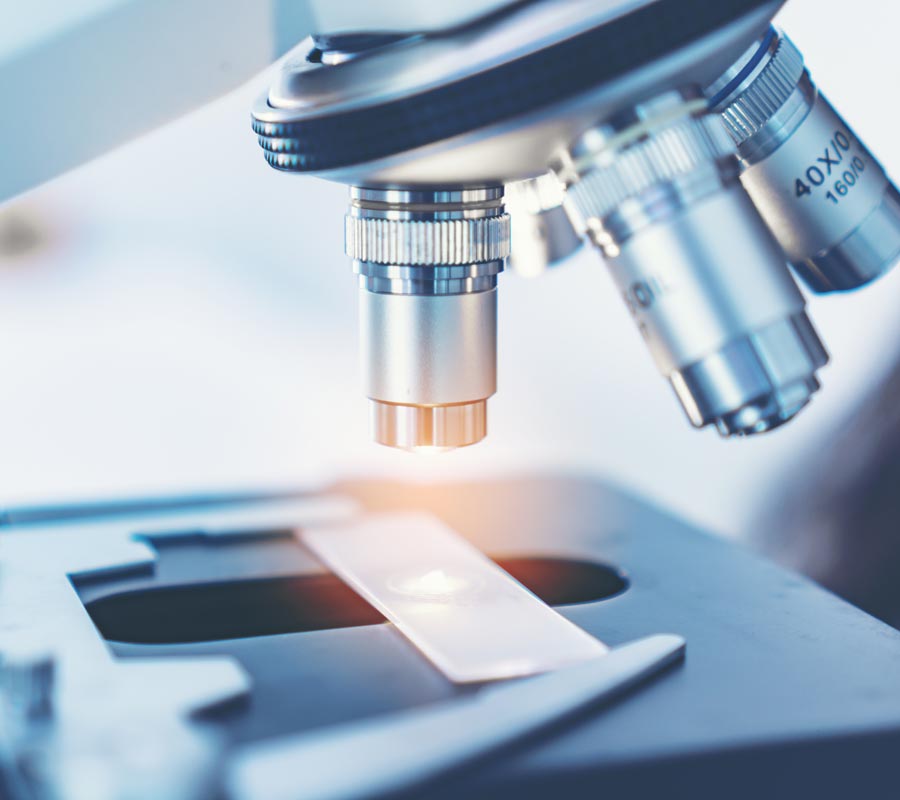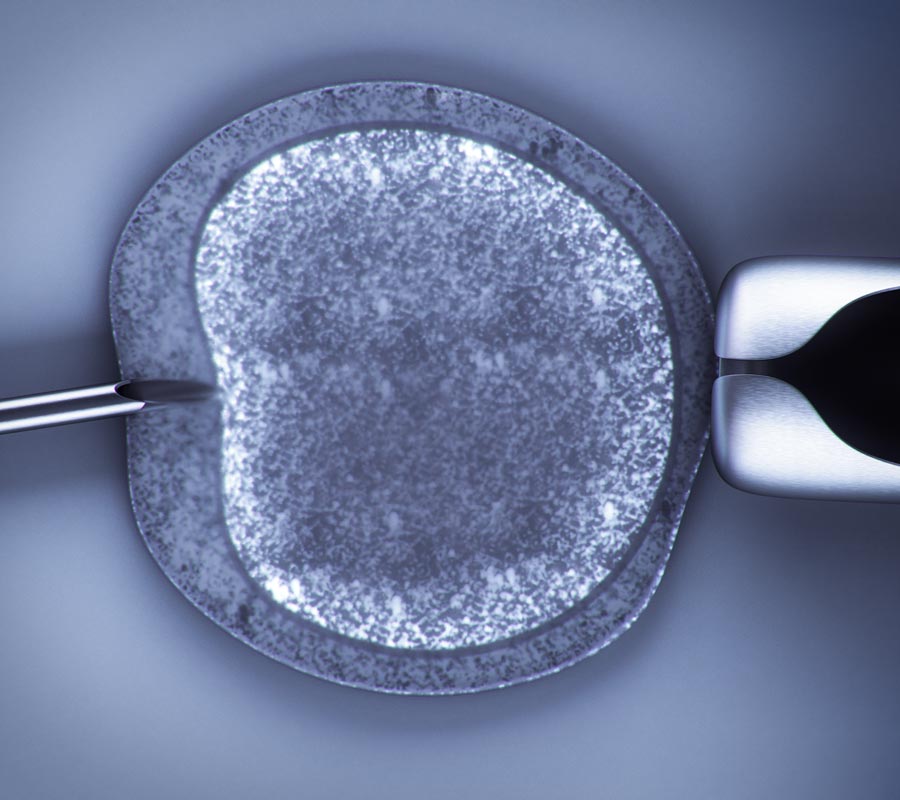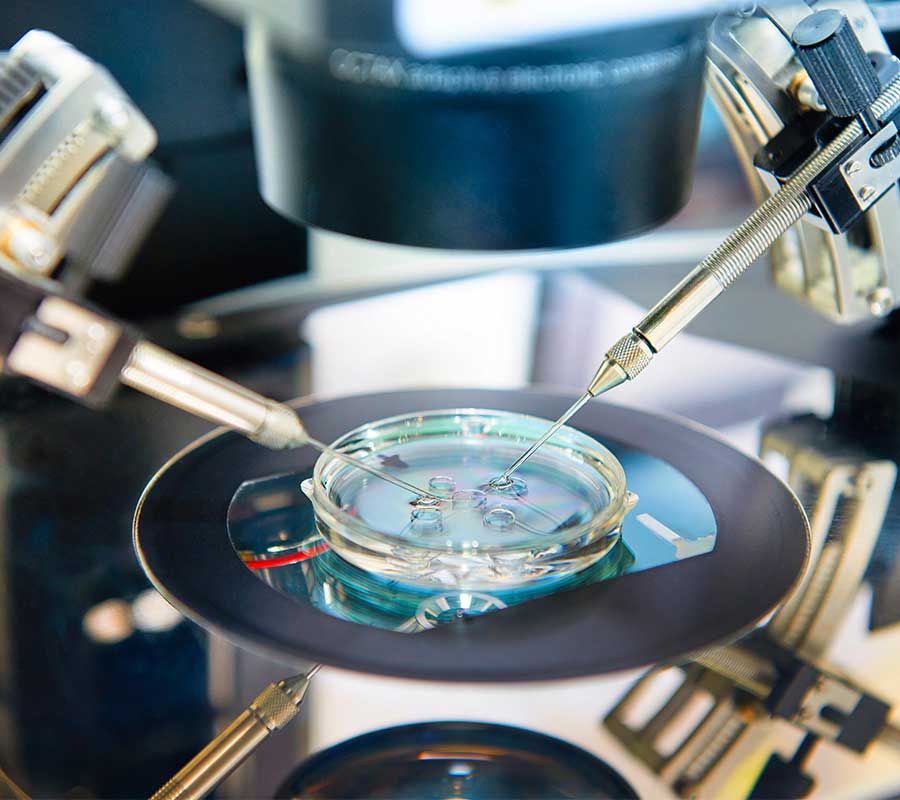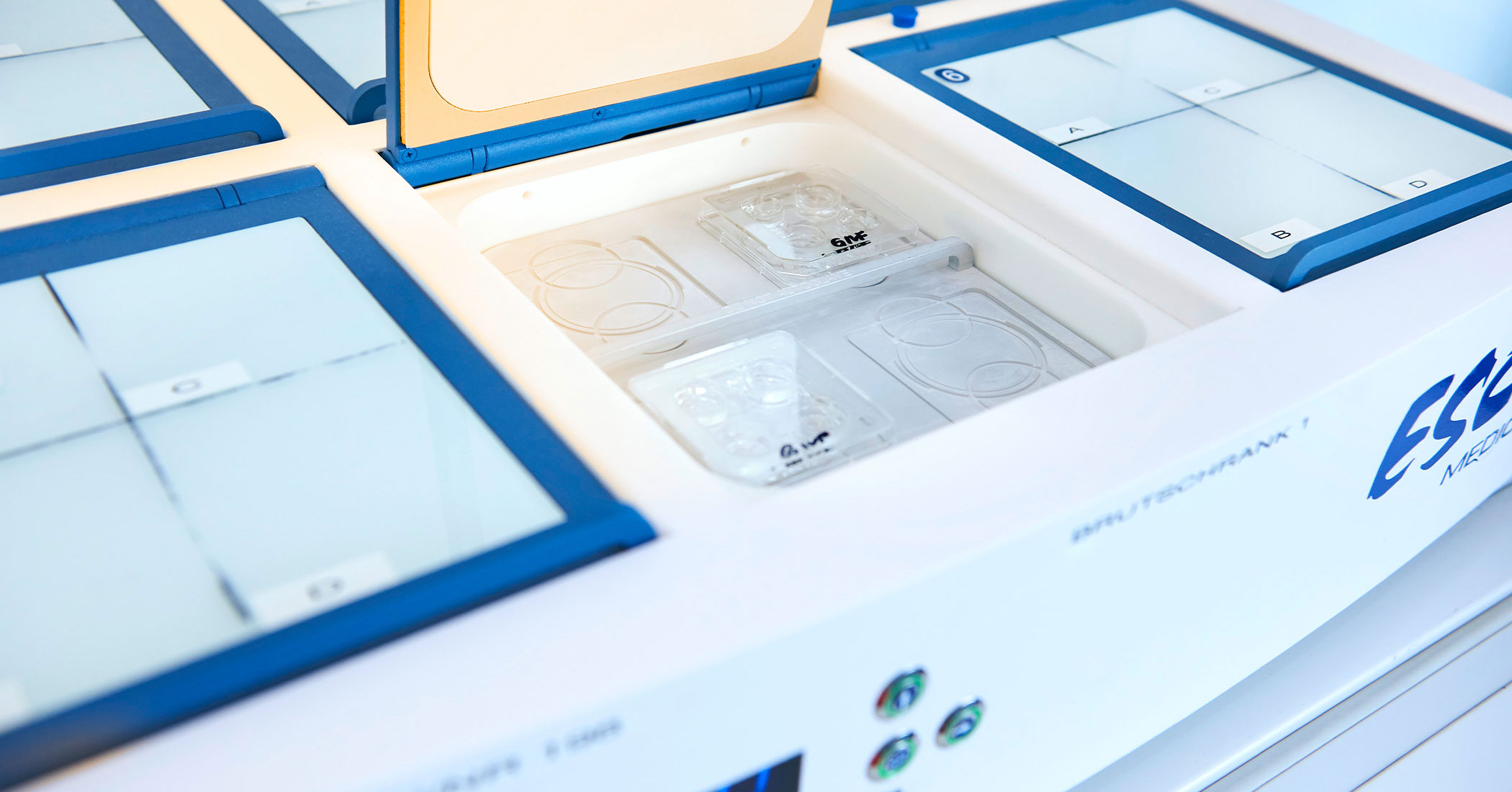Your reproductive-medicine experts
Embryo Glue
EmbryoGlue® contains a high concentration of hyaluronan (0.5 mg/ml) and a low concentration of recombinant human albumin. This product is specifically designed for embryo transfer, since it is thought that its components combine to simulate optimal conditions in the uterus and facilitate embryo implantation after transfer.
Although the majority of studies do show a higher pregnancy rate when embryo glue is used, other studies are inconclusive.
Since the data available is limited, it cannot be proven conclusively that using EmbryoGlue® on patients with a good prognosis leads to better results, but we can discuss with you individually whether its use might be beneficial in your case.
Costs:
EmbryoGlue® procedure is not one of the services covered by insurance companies in Germany, so if you wish to make use of this procedure, you will have to pay for the treatment yourself.
- EbryoGlue®
- Assisted hatching
- Calcium ionophore
- Endometrial scratching
- Blastocyst culture and transfer
Assisted Hatching
The human egg cell is surrounded by a membrane called the zona pellucida. This membrane surrounds the embryo in its early stages of development until about five or six days after fertilisation. At this stage, the embryo is called a ‘blastocyst’. Hatching is the process whereby the embryo leaves the outer membrane (zona pellucida) five or six days after fertilisation in order to nest in the lining of the uterus. This hatching is a crucial step in embryonic development and in creating the right conditions for pregnancy. Hatching is usually a natural process which is controlled by the embryo itself, and takes place when it has grown and reached a certain number of cells (called the ‘blastocyst’ stage).
Problems with the embryo’s natural hatching process:
Unfortunately, there are some factors that can make it difficult or even impossible for the embryo to leave its protective membrane. For example, the zona pellucida may be too hard or too thick. In such a case, the embryo needs help to be able to leave its membrane, ultimately leading to pregnancy.
Assisted-hatching techniques (laser hatching):
When the embryo needs help to hatch, additional microscopic treatment is used to make a small indentation in the membrane, which marks the place where it should crack during hatching. The idea is that this will make it easier for the embryo to leave the zona pellucida. Using a computer-controlled infrared laser, a short pulse makes the indentation. The embryo itself will not be damaged, since the laser treatment only affects the membrane, which will be shed later in any case. A notch is formed in the zona pellucida, which bursts open during hatching, allowing the embryo to leave its membrane without any problems.
Who could benefit from assisted-hatching treatment?
Although there have been individual studies that have shown a slight increase in pregnancy rates by using assisted hatching, a slightly larger number of studies currently show no improvement in pregnancy rates, so the benefits of this procedure cannot be guaranteed.
Costs:
Assisted-hatching treatment is not one of the services covered by insurance companies in Germany, so if you wish to make use of this procedure, you will have to pay for the treatment yourself.

Calcium ionophor
Calcium plays an important role in both cell fertilisation and subsequent division. Even after ICSI treatment (intracytoplasmic sperm injection), the egg fertilisation rate may still be very low or may not even occur. Unusually low fertilisation results and abnormalities in embryonic development may be due to a lack of calcium. This calcium deficiency may lead to either the sperm cell being unable to fertilise the egg cell or the egg cell not being able to divide properly afterwards.
One approach to solving the problem we just described would be to artificially enrich the egg cell with calcium immediately after fertilisation. In cases where this treatment has been recommended for a patient, the evidence suggests that this has led to an increase in fertilisation rates with ICSI-treatment and an improvement in the division rate or embryo development.
The doctor treating you will discuss whether the use of this product makes sense in your particular case.
Costs:
Calcium ionophore treatment is not one of the services covered by insurance companies in Germany, so if you wish to make use of this procedure, you will have to pay for the treatment yourself.

Endometrial scratching
The term ‘endometrial scratching’ refers to a targeted medically performed procedure, whereby a ‘scratching’ is made on the lining of the uterus. This is carried out in the second half of the menstrual cycle before IVF/ICSI treatment or the transfer of a frozen embryo.
It cannot yet be proven that this technique offers tangible benefits for all couples. However, there are indications that in certain sets of circumstances it could be helpful, although the scientific community is not yet unanimous on this point. We would be happy to discuss this further with you during the consultation.
Blastocyst culture and blastocyst transfer
In recent years, new insight into early embryonic development and a better growth environment have made it possible for embryos to be kept in culture outside the uterus up to days five and six after fertilisation.
A late embryo transfer (day 5) undoubtedly has the advantage that the development of the embryos can be observed and assessed for longer. Some embryos simply stop developing, mainly because the genetic material of the embryo has not been triggered at the 4-8 cell stage. Other embryos show abnormalities in shape, such as fissures, fragmentation, or significant differences in cell size within the embryo.
Development can be considered normal if by day 3 the embryos are at the 6-8 cell stage, or if by day 5 the blastocyst stage has been reached (see the illustration). However, only a maximum of 40% of embryos actually develop into a blastocyst. For this reason, it is necessary to attempt the culture of several embryos and then select the most suitable ones to give the best chance of a successful embryo transfer.
In certain cases, we offer our patients the option of selecting embryos after a longer pre-culture period.
Depending on the patient’s age and previous embryo-transfer history there may be advantages in the embryos being left in culture for a longer period. It increases the window of opportunity to observe embryo development and to identify embryos with good implantation potential. However, comparable results can also be achieved with optimally developed embryos and transfer on day 3. Since younger women especially generally produce high-quality egg cells and embryos, a day 3 transfer in conjunction with cryopreservation of all other regularly fertilised egg cells may be a better option.
The decision to opt for an extended culture period with identification of ideal embryos on day 5 must therefore always be carefully considered. A data comparison of German IVF register results (www.deutsches-ivf-register.de) from recent years – during which period hardly any day 5 transfers took place – with those from the Austrian IVF register – where embryo selection has always been carried out (www.bmg.gv.at) – shows almost no difference in pregnancy and birth rate.


